Exploring The Temple of Heaven: A UNESCO World Heritage Site Awaits
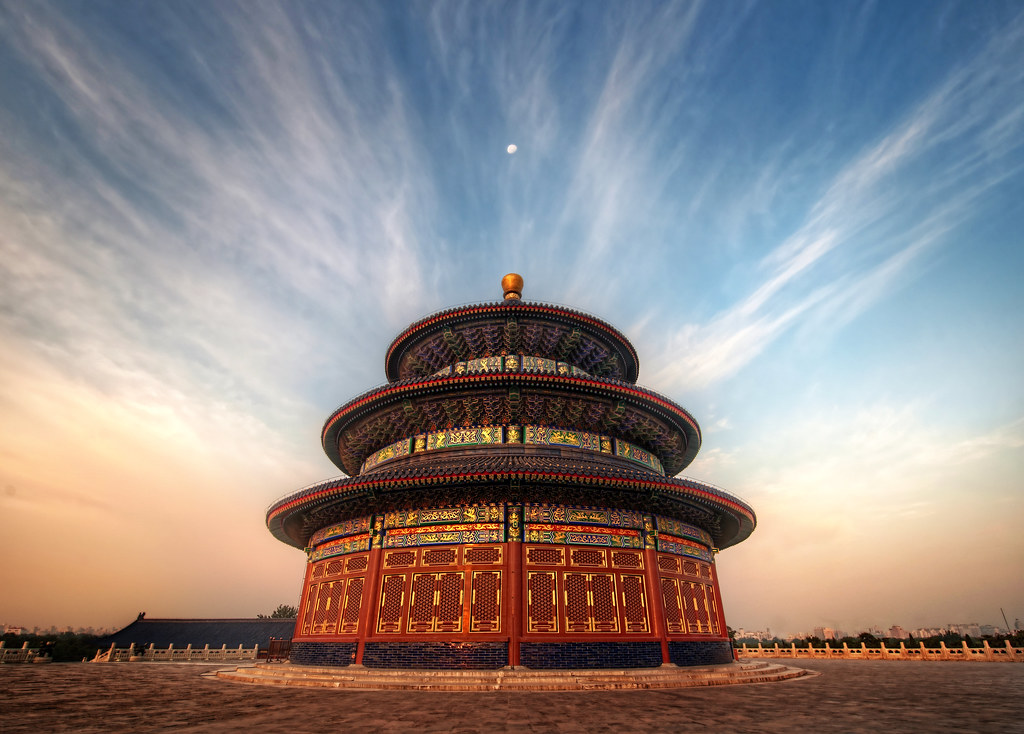
An Essential Guide to Visiting The_Temple_Of_Heaven
Visiting the Temple of Heaven (天坛公园) is like stepping into a vibrant tapestry woven from the threads of history, spirituality, and culture. Nestled in the heart of Beijing, this UNESCO World Heritage Site is not just an architectural marvel; it is a sacred space where emperors once sought divine favor for bountiful harvests. Spanning an impressive 273 acres, the park invites you to wander through its serene gardens, ancient cypress trees, and magnificent structures, each one echoing stories from centuries past.
As you enter through the grand South Gate, you’ll find yourself on a journey that follows the path of emperors, leading you to the iconic Hall of Prayer for Good Harvests, the exquisite Imperial Vault of Heaven, and the mesmerizing Circular Mound Altar. Each site showcases the ingenuity of ancient Chinese architecture while offering a glimpse into the spiritual beliefs that shaped the nation.
Whether you’re an avid history buff or simply seeking a peaceful retreat from the bustling city, the Temple of Heaven offers an unforgettable experience. Here, you can immerse yourself in the local culture as you witness morning exercises like tai chi or join in the lively atmosphere of communal singing and dancing. With its beautiful landscapes and rich heritage, the Temple of Heaven is more than just a destination; it is a place where tradition and tranquility converge, making it a must-visit on your journey through China.
In This Guide
- An Essential Guide to Visiting The_Temple_Of_Heaven
- The Rich History and Legends of The_Temple_Of_Heaven
- Main Highlights: What You Absolutely Can’t Miss
- Planning Your Visit: A Practical Guide
- Tickets: Prices, Booking, and Tips
- How to Get There: A Complete Transportation Guide
- Local Cuisine and Accommodation Nearby
- Frequently Asked Questions
- Final Thoughts on Your Trip
The Rich History and Legends of The_Temple_Of_Heaven
The Temple of Heaven, a stunning masterpiece of ancient Chinese architecture, is not just a feast for the eyes but also a site steeped in rich history and legend. Constructed during the reign of the Ming Dynasty, between 1406 and 1420, this sprawling complex was originally designed as a sacred place where emperors of the Ming and Qing dynasties would perform rituals and prayers to the heavens, seeking blessings for good harvests and the wellbeing of their people.
The architectural brilliance of the Temple of Heaven is evident in its grand layout and exquisite structures. The most iconic of these is the Hall of Prayer for Good Harvests, a majestic building that symbolizes the connection between earth and heaven. Its unique circular shape, adorned with vibrant blue tiles, reflects the ancient cosmological beliefs of the Chinese, where the roundness represented the heavens and the square represented the earth. This design is not merely aesthetic but is deeply rooted in the philosophy of harmony between nature and humanity.
The rituals performed here were elaborate and often took place on the winter solstice, a time when emperors would offer sacrifices to the heavens. These ceremonies were steeped in symbolism, with various offerings made to ensure a bountiful harvest. The Circular Mound Altar, another significant feature of the temple, was where these offerings took place. Its three-tiered design, composed of white marble, is a reflection of the number nine, which is considered auspicious in Chinese culture. Legend has it that the center stone of the altar can amplify sound, allowing the emperor’s prayers to resonate with the heavens.
Throughout the centuries, the Temple of Heaven has not only served as a place of worship but also as a cultural icon. It is a UNESCO World Heritage Site, recognized for its architectural significance and its role in the spiritual life of the Chinese people. The site has inspired countless poems, paintings, and stories, embedding itself in the cultural fabric of China.
Visitors to the Temple of Heaven today can feel the weight of its history. As they wander through its serene gardens and gaze up at its striking structures, they can almost hear the whispers of the past—of emperors praying for rain, of the solemn rituals that took place under the watchful eyes of the heavens. This connection to history is palpable, making the Temple of Heaven a must-visit for anyone seeking to understand the depth of Chinese culture and spirituality.
In addition to its historical significance, the Temple of Heaven is alive with legends. Stories of the emperors’ divine connections, the spirits of the ancients, and the whispers of the winds add layers of intrigue to this sacred space. Each visit is not only a journey through time but also an invitation to explore the myths and tales that have shaped the lives of millions over generations.
As you stroll through the Temple of Heaven, take a moment to absorb the atmosphere and imagine the rituals that unfolded in these very spaces. You will leave not just with memories of its beauty but with an appreciation for the profound history and legends that breathe life into this remarkable site.
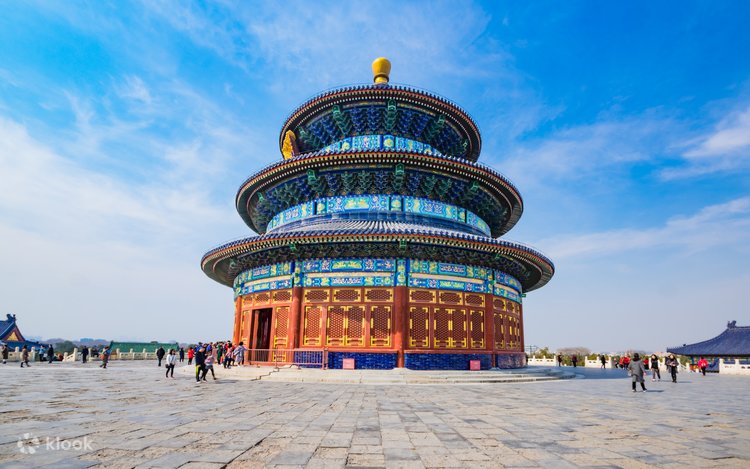
The_Temple_Of_Heaven.
Main Highlights: What You Absolutely Can’t Miss
Visiting the Temple of Heaven is a journey into the heart of Chinese culture and architecture. As one of Beijing’s most iconic landmarks, this UNESCO World Heritage Site offers a wealth of sights and experiences that you absolutely cannot miss. Here’s a detailed guide to the main highlights:
Circular Mound Altar
The Circular Mound Altar is a stunning architectural feat that comprises three round tiers of white marble, each meticulously designed using the auspicious number nine—considered lucky in Chinese culture. Not only does this altar serve as a historical site where emperors prayed for good harvests during the winter solstice, but it also features the Heavenly Center Stone. Visitors often find joy in standing on this stone, as it creates a fascinating echo when you speak—an experience that brings a touch of magic to your visit.
Imperial Vault of Heaven
Next on your journey is the Imperial Vault of Heaven, renowned for its unique architectural style. This round structure, topped with a vibrant blue dome, is notable for its lack of supporting beams, showcasing ancient Chinese engineering brilliance. Inside, the walls are adorned with colorful murals of dragons and phoenixes, symbols of power and good fortune. The vault also houses tablets commemorating the ancestors of the emperors, adding a layer of historical significance to your exploration.
Hall of Prayer for Good Harvests
No visit to the Temple of Heaven would be complete without marveling at the Hall of Prayer for Good Harvests. This is perhaps the most famous structure within the complex, with its striking three-layered roof of blue tiles that seems to reach for the heavens. Built without the use of nails or beams, it stands majestically on a large marble base, a testament to the architectural prowess of ancient China. This hall was historically the site where emperors prayed for rain and bountiful crops, making it a vital part of the temple’s spiritual legacy. It’s also a fantastic backdrop for photos, so be sure to capture the moment!
The Echo Wall
As you stroll through the park, make a stop at the Echo Wall. This architectural wonder is known for its acoustic properties; when you whisper at one end, your voice can be heard clearly at the opposite side. It’s a delightful experience that adds an interactive element to your visit, inviting you to engage with the space in a unique way.
Local Activities and Cultural Experiences
Beyond the stunning architecture, the Temple of Heaven is alive with local culture. In the mornings, you’ll find locals practicing tai chi, dancing, or playing traditional games like chess and cards under the ancient cypress trees. These activities not only provide entertainment but also offer a glimpse into the daily lives of Beijingers. Take a moment to join in or simply observe; it’s a wonderful way to immerse yourself in the vibrant atmosphere of the park.
Suggested Walking Path
To make the most of your visit, follow this suggested walking path:
- Enter through the South Gate: The grand entrance sets the tone for your journey.
- Circular Mound Altar: Explore the altar and stand on the Heavenly Center Stone.
- Sacred Way: Walk north along this tranquil path lined with ancient trees.
- Imperial Vault of Heaven: Admire the dome and intricate dragon paintings.
- Hall of Prayer for Good Harvests: Take photos and appreciate the architectural marvel.
- Exit through the East Gate: This exit conveniently leads you back to the city.
By following this route, you’ll experience the Temple of Heaven as emperors once did, deepening your connection to this extraordinary site.
Conclusion
The Temple of Heaven is not just a destination; it’s a rich tapestry of history, spirituality, and culture. From the awe-inspiring architecture to the lively local activities, it offers a multifaceted experience that will leave you with lasting memories. Be sure to take your time, enjoy the serene environment, and soak in the significance of this remarkable site.
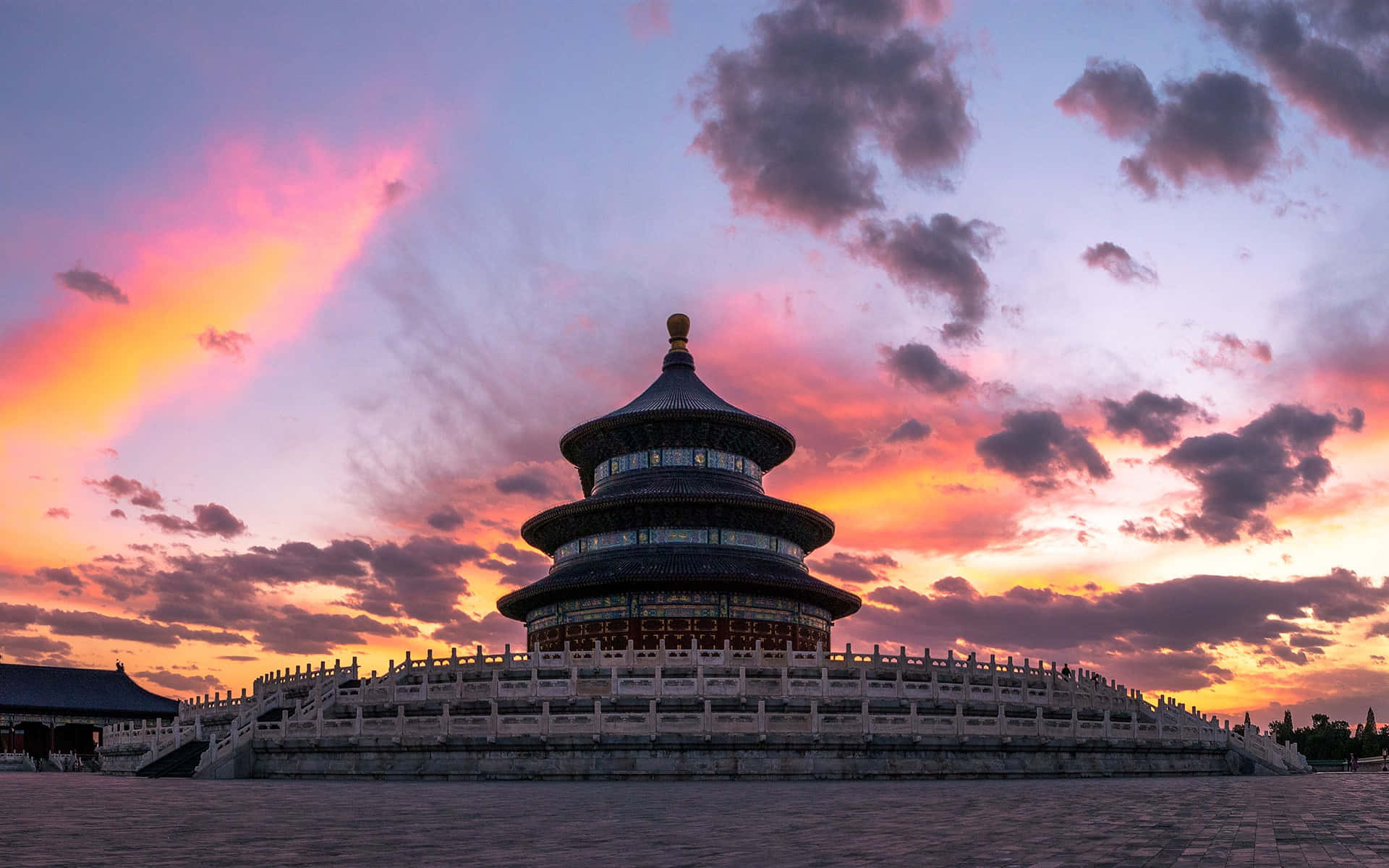
The_Temple_Of_Heaven.
Planning Your Visit: A Practical Guide
Planning Your Visit: A Practical Guide to the Temple of Heaven
Visiting the Temple of Heaven (天坛公园) is a must for anyone traveling to Beijing. This UNESCO World Heritage Site offers a unique glimpse into Chinese culture, history, and architecture. To make the most of your visit, follow this practical guide that covers everything from tickets to the best times to visit.
Getting There
Public Transport:
The most efficient way to reach the Temple of Heaven is via the subway. Take Line 5 and disembark at Tiantandongmen Station, which is just a short walk from the East Gate of the park. This line connects to many popular areas in Beijing, making it convenient for travelers.
- Tip: Purchase a rechargeable subway card at any station. It will save you time and streamline your travel experience.
Bus and Taxi Options:
If you prefer buses, several routes, including 6, 35, and 116, stop near the park entrances. Taxis are readily available in Beijing; simply tell the driver “Tiantan” (天坛) for a direct ride.
Walking:
If you are staying nearby, walking to the park can be a delightful experience. The area is lively, especially in the morning, and it allows you to see local shops and people going about their daily lives.
Ticket Information
Purchasing Tickets:
To avoid long queues, it is highly recommended to buy your tickets in advance. Prices range from CNY 10 to CNY 34 depending on the season, with combination tickets granting access to all major attractions—Circular Mound Altar, Imperial Vault of Heaven, and Hall of Prayer for Good Harvests.
- Where to Buy:
- Official Website/App: Best for those with a Chinese cell phone number.
- Third-Party Booking Sites: Ideal for international visitors; many offer English options and discounts.
- On-Site Ticket Booth: Available during the low season, but expect longer lines during peak times.
Entry Requirements:
Upon arrival, present your ticket and a valid ID (passport works best). If you booked online, have your confirmation code handy, as staff will scan it at the entrance. Keep your ticket with you, as you may need to show it again at the main halls.
Best Times to Visit
Optimal Seasons:
The best times to visit the Temple of Heaven are during spring (March to May) and autumn (September to November). During these months, temperatures are mild (around 50°F to 77°F or 10°C to 25°C), and the scenery is particularly beautiful—spring brings blooming flowers, while autumn showcases golden leaves.
- Tip: May and October are especially popular, so consider visiting on weekdays for a quieter experience.
Daily Hours:
The park is open daily from 6:00 AM to 10:00 PM, with varying closing times throughout the year. For a more tranquil experience, arrive early in the morning or later in the afternoon, as most visitors come between 9:00 AM and 3:00 PM.
Suggested Itinerary
-
Enter through the South Gate: This grand entrance provides a majestic start to your visit and leads directly to the main attractions.
-
Explore the Circular Mound Altar: Stand on the Heavenly Center Stone and experience the unique acoustics.
-
Stroll along the Sacred Way: Enjoy the serene atmosphere under the ancient cypress trees.
-
Visit the Imperial Vault of Heaven: Admire the dome and vibrant interior decorations.
-
Capture photos at the Hall of Prayer for Good Harvests: This iconic structure is perfect for stunning snapshots.
-
Exit through the East Gate: This will lead you back to the city and is conveniently located near public transport.
Local Activities
While exploring the Temple of Heaven’s architectural wonders, take a moment to observe the locals engaging in various activities. From tai chi and group dancing to card games and traditional crafts, these interactions offer a glimpse into daily life in Beijing.
Guided Tours
For a more enriching experience, consider joining a guided tour. Audio guides are available for rent at every entrance and are offered in multiple languages, including English. Alternatively, live guides can be found at the South Gate, providing insights into the history and significance of the site.
Final Tips
- Dress Comfortably: Wear comfortable shoes and dress appropriately for the weather, as you’ll be walking a lot.
- Stay Hydrated: Bring water to keep yourself refreshed during your explorations.
- Respect the Space: As a UNESCO World Heritage Site, it’s essential to respect the rules and maintain the park’s integrity.
With this guide in hand, you’re well-prepared for an unforgettable day at the Temple of Heaven, blending history, culture, and stunning architecture into a truly unique experience. Enjoy your visit!
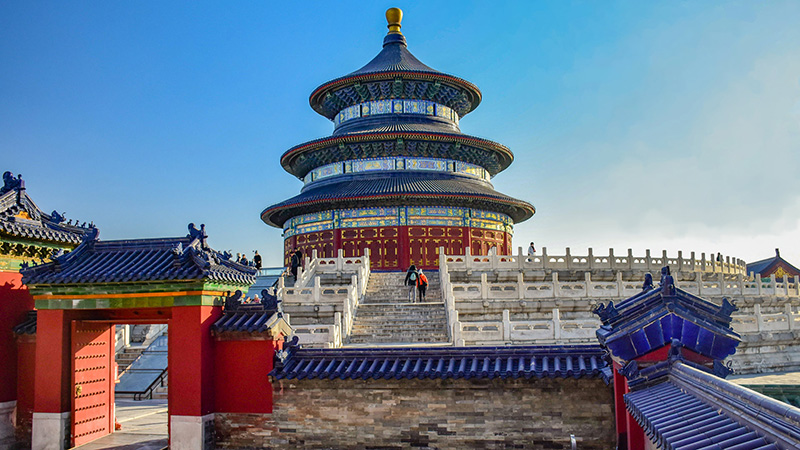
The_Temple_Of_Heaven.
Tickets: Prices, Booking, and Tips
When planning your visit to the Temple of Heaven, securing your tickets in advance is key to a smooth and enjoyable experience. This iconic site, known for its stunning architecture and tranquil park setting, offers a few ticket options to cater to different visitor needs.
Ticket Options and Prices
The Temple of Heaven features a combination ticket that grants access to all the major attractions within the park, including the magnificent Hall of Prayer for Good Harvests, the Imperial Vault of Heaven, and the Circular Mound Altar. Here’s a quick overview of ticket prices:
- Standard Entry: CNY 10–34, depending on the season.
- Audio Guide Rental: CNY 40, available in multiple languages for a more informative visit.
Booking Your Tickets
To avoid long lines and ensure availability, it’s advisable to book your tickets at least one day in advance. Here are the main ways to secure your entry:
- Official Website/App: If you have a Chinese mobile number, this is the fastest option for locals.
- Third-Party Booking Sites: Ideal for international travelers, these platforms are user-friendly and often offer package deals or discounts. Many provide English-language support and customer reviews to help you make an informed decision.
- On-Site Ticket Booth: While tickets may be available at the entrance during the low season, this option carries the risk of long queues, especially during weekends and holidays.
Entry Requirements
Upon arrival, have your ticket and a valid ID ready for inspection at the entrance. A passport is typically accepted for international visitors. If you booked online, bring your confirmation code or e-ticket, as staff will scan it at the gate. Children under 1.2 meters in height may enter free of charge, but it’s wise to verify the latest regulations before your visit.
Helpful Tips
- Plan Ahead: Booking in advance saves time and often secures better prices.
- Dress Comfortably: Wear suitable footwear as you’ll be walking extensively throughout the sprawling 273-acre park.
- Visit During Off-Peak Times: Early mornings or late afternoons are ideal for a quieter experience, allowing you to soak in the park’s serene atmosphere without the crowds.
By following these guidelines, you’ll be well-prepared for a memorable visit to the Temple of Heaven, where history and tranquility merge seamlessly.
How to Get There: A Complete Transportation Guide
Reaching the Temple of Heaven (天坛公园) in Beijing is a straightforward endeavor, thanks to the city’s efficient public transportation system. Whether you’re coming from a hotel in the city center or a nearby area, there are several convenient options to get you to this UNESCO World Heritage Site.
Subway
The subway is undoubtedly the fastest and most efficient way to reach the Temple of Heaven. Here’s how to navigate the system:
- Line 5: Take Line 5 and disembark at Tiantandongmen Station. This station is conveniently located just a short walk from the East Gate of the park.
- Travel Time: Expect to spend about 30 minutes from many central locations in Beijing.
- Frequency: Trains run frequently, making it easy to hop on and off as you explore the city.
Tip: Consider purchasing a rechargeable subway card at any station. This will save you time and streamline your travel experience.
Bus
If you prefer to take the bus, you have several options:
- Bus Routes: Look for bus lines 6, 35, 36, 39, 41, 43, 60, 116, or 128, all of which stop at various entrances to the park.
- Route Maps: You can check route maps at bus stops or use a mobile mapping app to find the nearest stop.
Note: Buses can be slower than the subway due to traffic, especially during peak hours.
Taxi
For a more direct route, taxis are widely available throughout Beijing:
- Language Tip: It’s helpful to tell the driver “Tiantan” or show them the park’s name in Chinese (天坛) to avoid any communication barriers.
- Travel Time: A taxi ride from central Beijing typically takes about 15–20 minutes, depending on traffic conditions.
- Convenience: Taxis will drop you off right at the entrance, minimizing any walking time.
Walking
If you’re staying nearby, consider taking a leisurely stroll to the Temple of Heaven:
- Safe and Lively Area: The surroundings of the park are vibrant and safe, especially in the morning when you can observe locals engaging in their daily routines.
- Distance: Many hotels and hostels are within a 20-minute walk, allowing you to soak in the local atmosphere on your way.
Suggested Entry Point
When you arrive, it’s recommended to enter through the South Gate. This is not only the traditional entrance but also the most scenic route into the park, where you can immediately appreciate the grandeur of the Temple of Heaven.
Summary
- Subway: Take Line 5 to Tiantandongmen Station (30 minutes).
- Bus: Various routes stop at the park; check local maps.
- Taxi: 15–20 minutes from central Beijing; communicate in Chinese if needed.
- Walking: A pleasant option for nearby visitors; enjoy local life along the way.
By choosing any of these convenient transportation options, you can focus on enjoying your visit to the magnificent Temple of Heaven, where history, architecture, and culture converge in a peaceful setting.
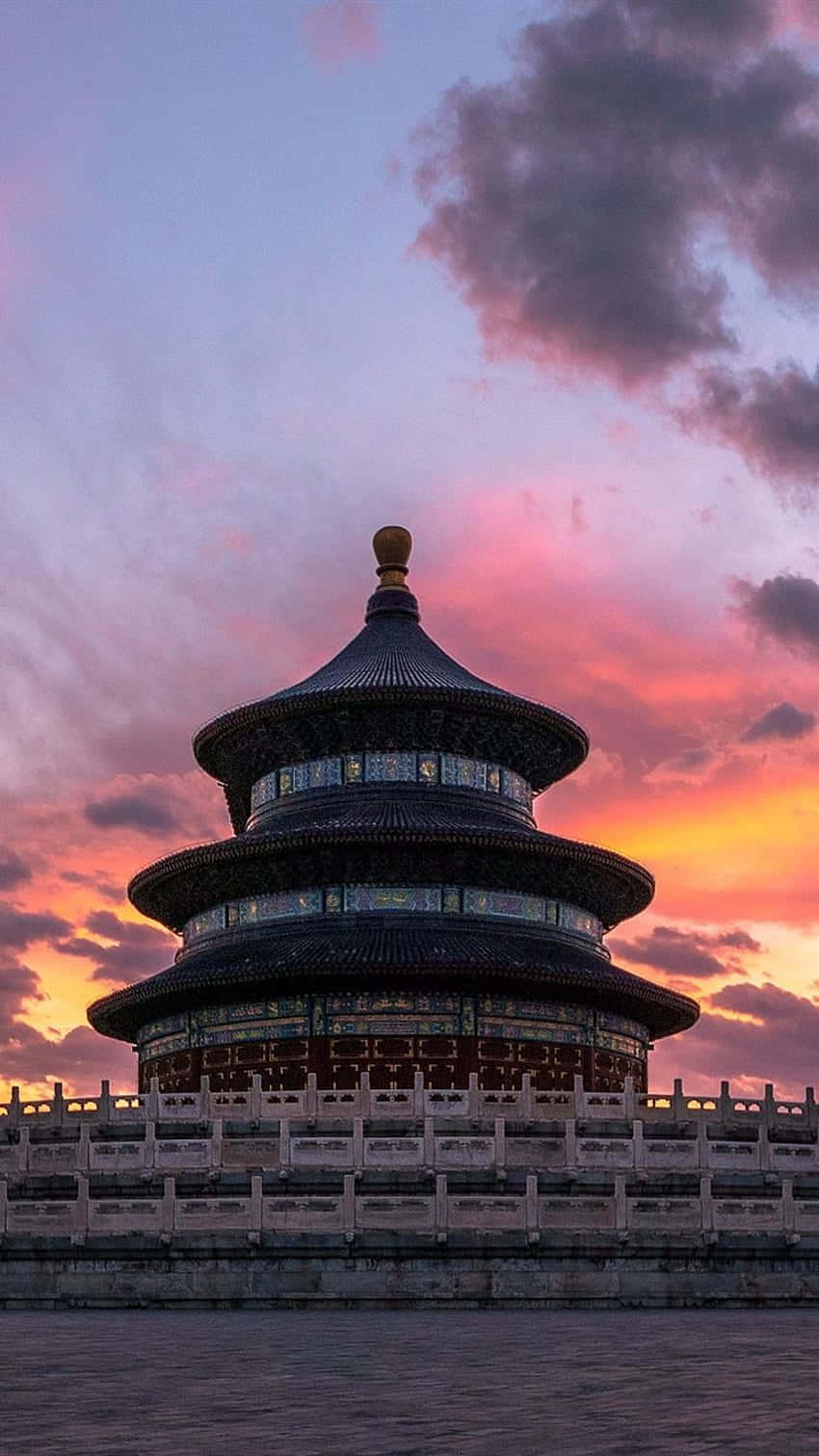
The_Temple_Of_Heaven.
Local Cuisine and Accommodation Nearby
When visiting the Temple of Heaven, you’ll want to savor the local flavors of Beijing while enjoying comfortable accommodations nearby. This area is rich in culinary delights and offers a variety of lodging options to suit all travelers.
Culinary Delights
1. Da Dong Roast Duck (大董烤鸭)
Known for its succulent Peking duck, Da Dong offers a contemporary dining experience with a menu that celebrates this iconic dish. The duck is expertly carved right at your table, and the crispy skin paired with thin pancakes and sweet bean sauce is a must-try. Reservations are recommended, especially during peak dining hours.
2. Jin Ding Xuan (金鼎轩)
If you’re in the mood for dim sum, Jin Ding Xuan is a local favorite. This restaurant serves a wide array of steamed and fried dim sum dishes, along with traditional Beijing noodles. The lively atmosphere and reasonable prices make it a perfect spot for a casual meal after your visit.
3. Quanjude (全聚德)
Another renowned establishment for Peking duck, Quanjude has been serving this delicacy since 1864. The restaurant’s historic ambiance adds to the experience, making it a great choice for those wanting to delve into Beijing’s culinary heritage.
4. Wangfujing Snack Street
For a more adventurous dining experience, head to Wangfujing Snack Street. This bustling market features a variety of street food stalls where you can sample local snacks such as skewered meats, dumplings, and even exotic treats like scorpions. It’s a fun way to taste the vibrant food culture of Beijing.
Nearby Accommodations
1. Hotel Jen Beijing (嘉里大酒店)
Just a short distance from the Temple of Heaven, Hotel Jen offers modern amenities and a comfortable stay. With stylish rooms and a rooftop bar providing stunning city views, this hotel is perfect for both relaxation and convenience.
2. Crowne Plaza Beijing (北京皇冠假日酒店)
This upscale hotel is located near the Temple of Heaven and features spacious rooms, an on-site restaurant, and a fitness center. The Crowne Plaza is ideal for travelers seeking a touch of luxury during their stay.
3. Beijing 161 Wangfujing Hotel (北京161王府井酒店)
For a more boutique experience, the Beijing 161 Wangfujing Hotel combines traditional Chinese architecture with modern comforts. Its convenient location makes it easy to explore the city, and the cozy atmosphere provides a welcoming retreat.
4. Redwall Hotel (红墙酒店)
Located within walking distance of the Temple of Heaven, the Redwall Hotel offers a blend of Western and Chinese styles. The charming courtyard and attentive staff make it a great choice for travelers looking for a homey feel.
Conclusion
With a range of dining options from casual to upscale and a variety of accommodations to fit every budget, your visit to the Temple of Heaven can be complemented by the rich flavors and comforts of Beijing. Enjoy immersing yourself in the local culture both inside and outside the park!
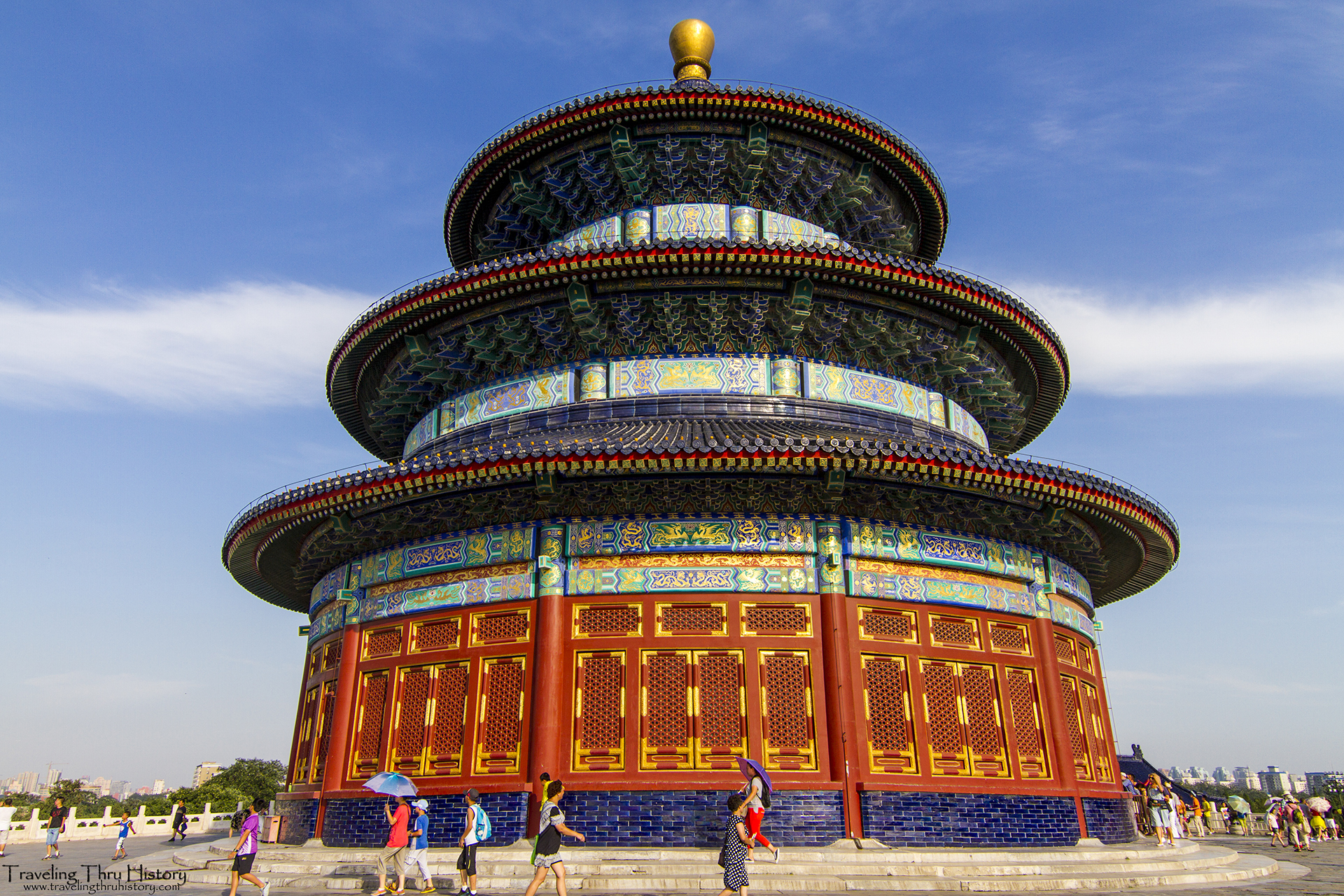
The_Temple_Of_Heaven.
Frequently Asked Questions
Frequently Asked Questions
-
What are the opening hours for the Temple of Heaven?
The Temple of Heaven is open daily from 6:00 AM to 10:00 PM. However, the closing time may vary slightly depending on the season, so it’s best to check ahead if you’re visiting during the winter months. -
How do I get to the Temple of Heaven using public transport?
The easiest way to reach the Temple of Heaven is by subway. Take Line 5 and get off at Tiantandongmen Station, which is located right near the East Gate. Buses also stop at each entrance, and taxis are readily available throughout Beijing. -
Do I need to book my tickets in advance?
Yes, it’s highly recommended to book your tickets at least one day in advance, especially during busy periods. You can purchase them through official platforms if you have a Chinese phone number or use third-party booking sites that cater to international visitors. -
What types of tickets are available?
The most popular option is the combination ticket, which grants you access to all main attractions within the park, including the Hall of Prayer for Good Harvests, the Imperial Vault of Heaven, and the Circular Mound Altar. -
What should I wear when visiting the Temple of Heaven?
Wear comfortable shoes, as you’ll be walking quite a bit. Dress appropriately for the weather, and make sure to stay hydrated. If visiting in summer, lightweight clothing is ideal; in winter, be prepared for colder temperatures. -
What is the best time of year to visit?
The best times to visit are during spring (March to May) and autumn (September to November) when the weather is mild and pleasant. You can enjoy blooming flowers in spring and beautiful autumn leaves, making it perfect for sightseeing and photography. -
Are there any facilities for families with young children?
Yes, the Temple of Heaven is family-friendly, offering stroller rentals, baby care rooms, and restrooms throughout the park. It’s a comfortable environment for families to explore. -
Can I take a guided tour of the Temple of Heaven?
Absolutely! Guided tours are available, including audio guides in multiple languages. Live guides are also present at the South Gate, offering tours in English and Chinese. These options provide deeper insights into the history and significance of the temple.
Final Thoughts on Your Trip
As you wrap up your visit to the Temple of Heaven, take a moment to reflect on the profound connection between the ancient rituals and the serene beauty that surrounds you. This UNESCO World Heritage Site is not just a testament to China’s architectural prowess; it is a living tapestry of culture, spirituality, and community. Whether you stood on the Heavenly Center Stone at the Circular Mound Altar, marveled at the intricate designs of the Hall of Prayer for Good Harvests, or watched locals engage in tai chi, each experience adds a unique layer to your journey.
Remember, the Temple of Heaven is more than a destination—it’s a glimpse into the heart of Beijing, where history and daily life intertwine. As you leave, carry with you the tranquil spirit of this sacred space and the memories of its vibrant atmosphere. Whether you’re planning to return or sharing your stories with fellow travelers, the essence of the Temple of Heaven will linger in your heart, reminding you of the beauty and depth of Chinese culture. Safe travels on your next adventure!